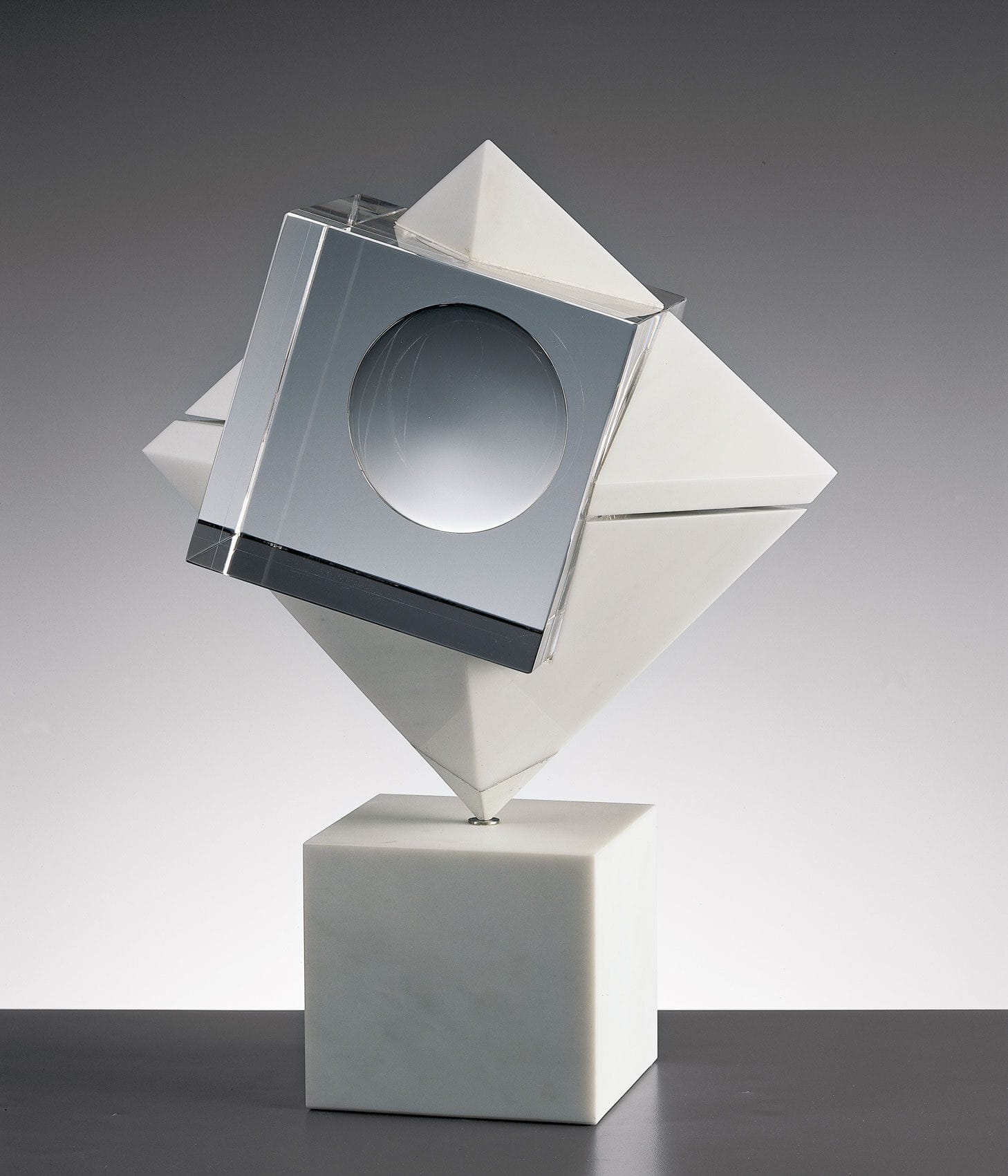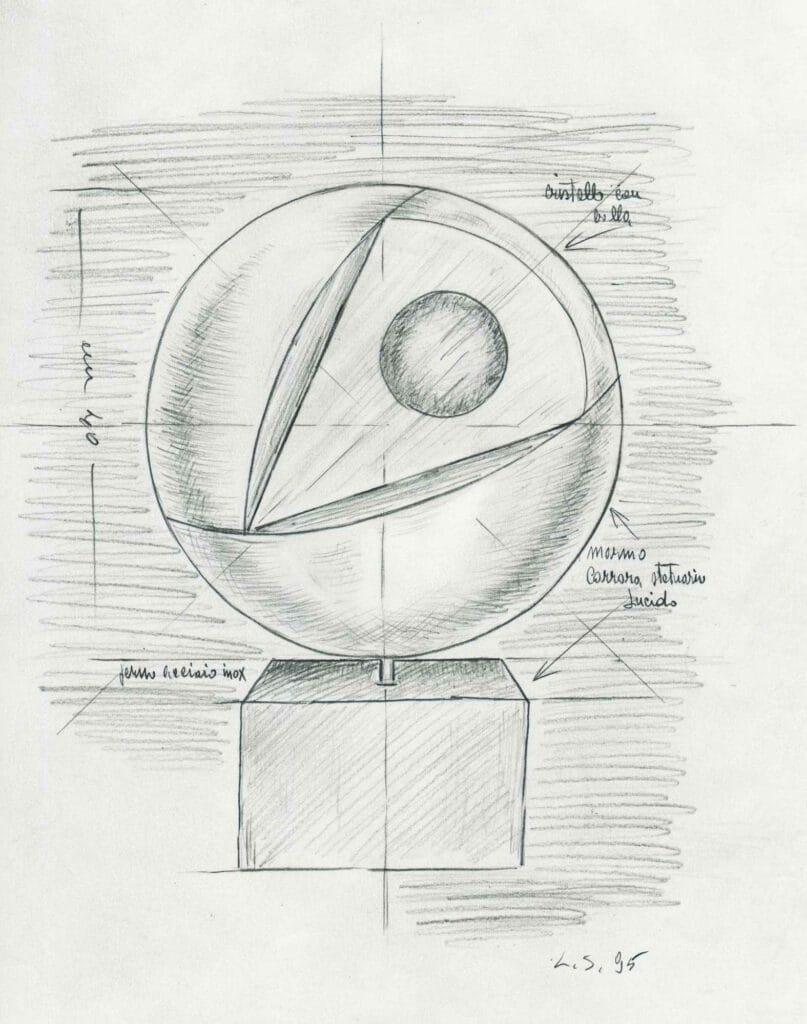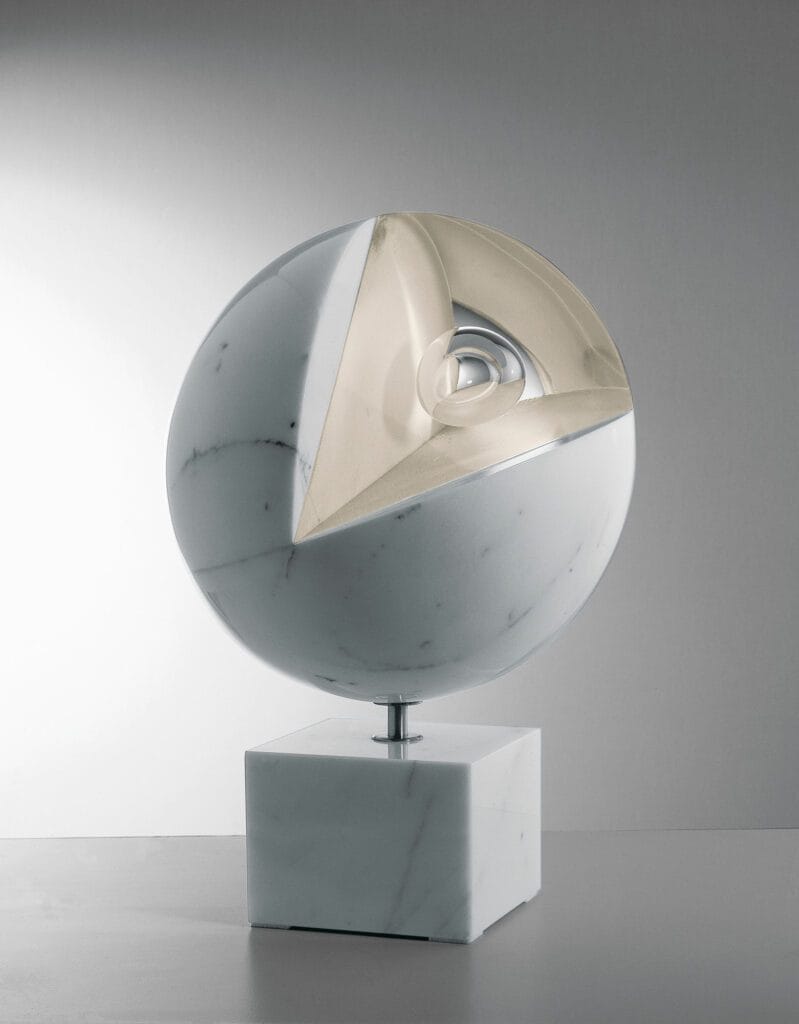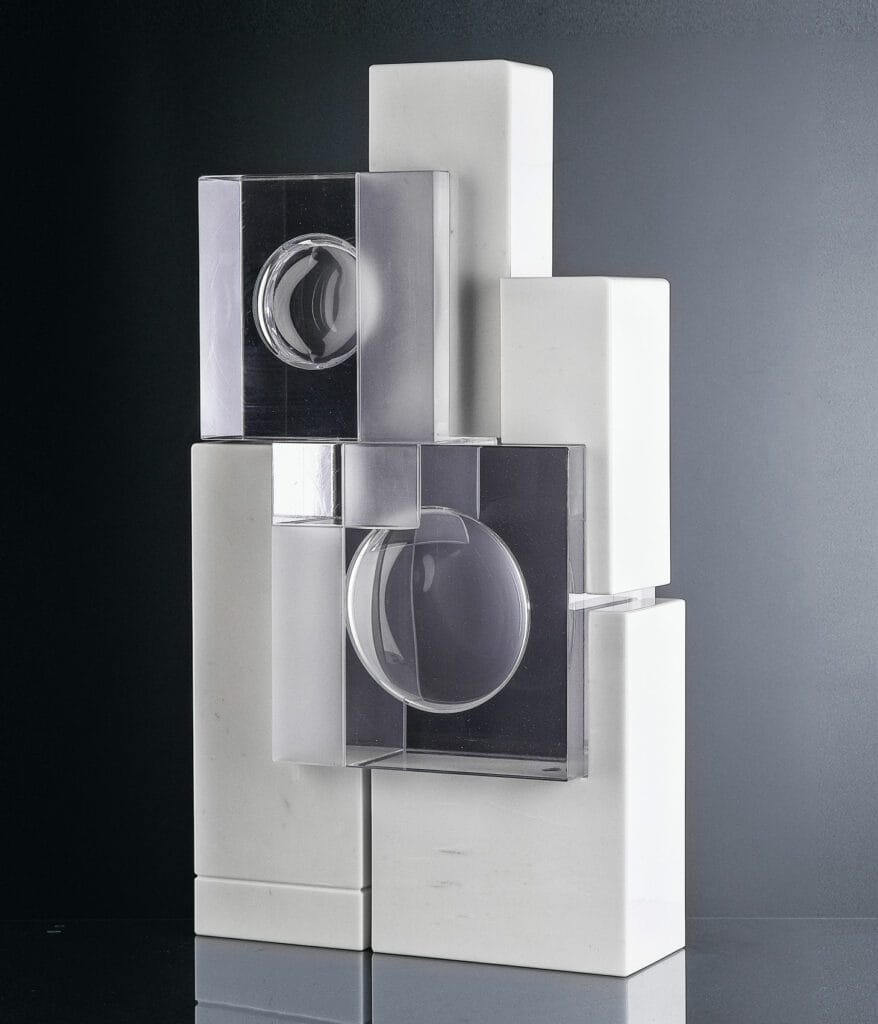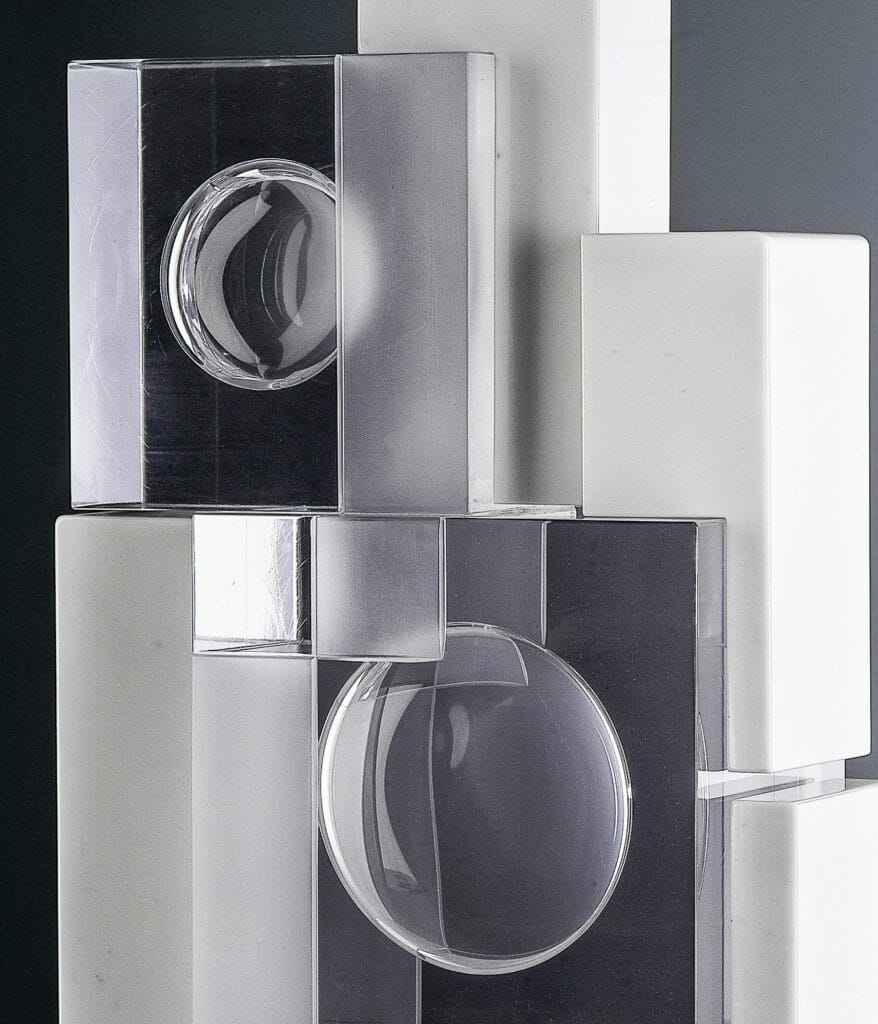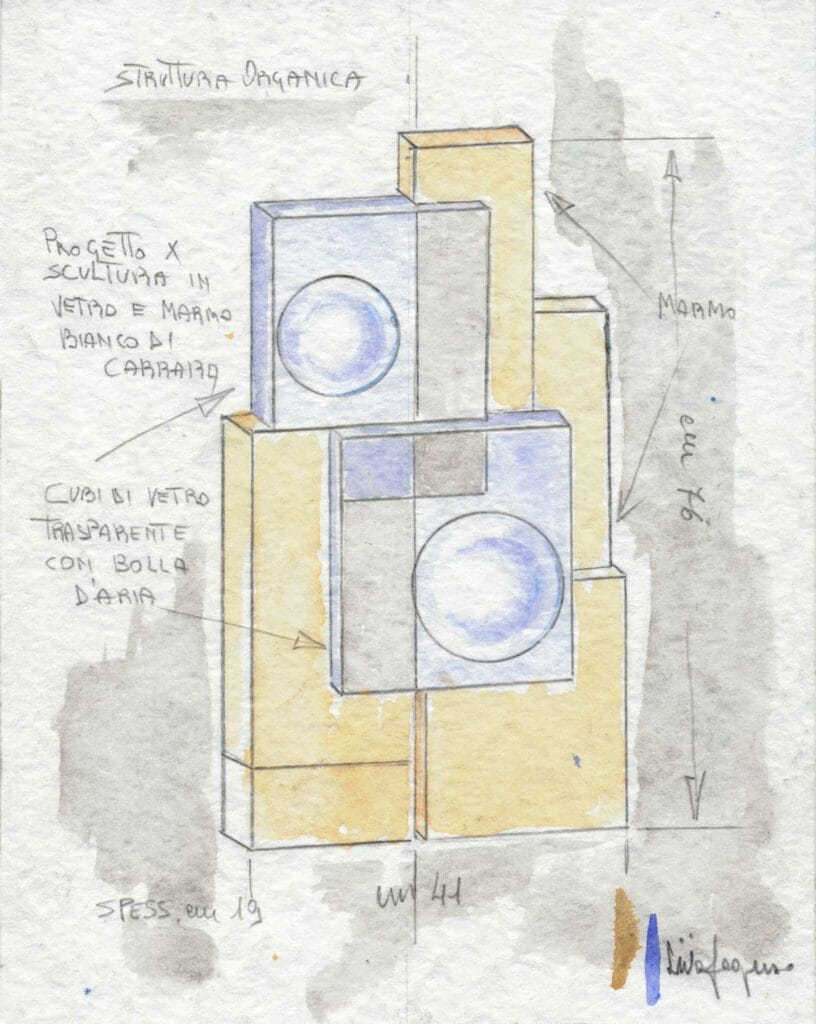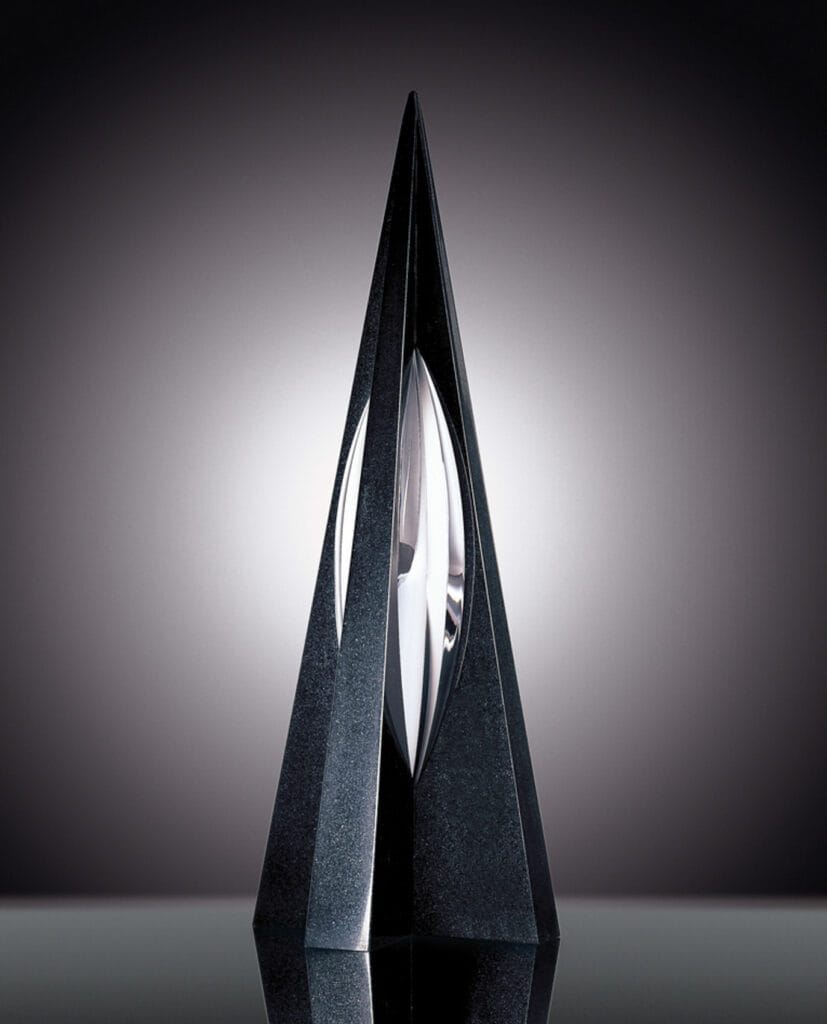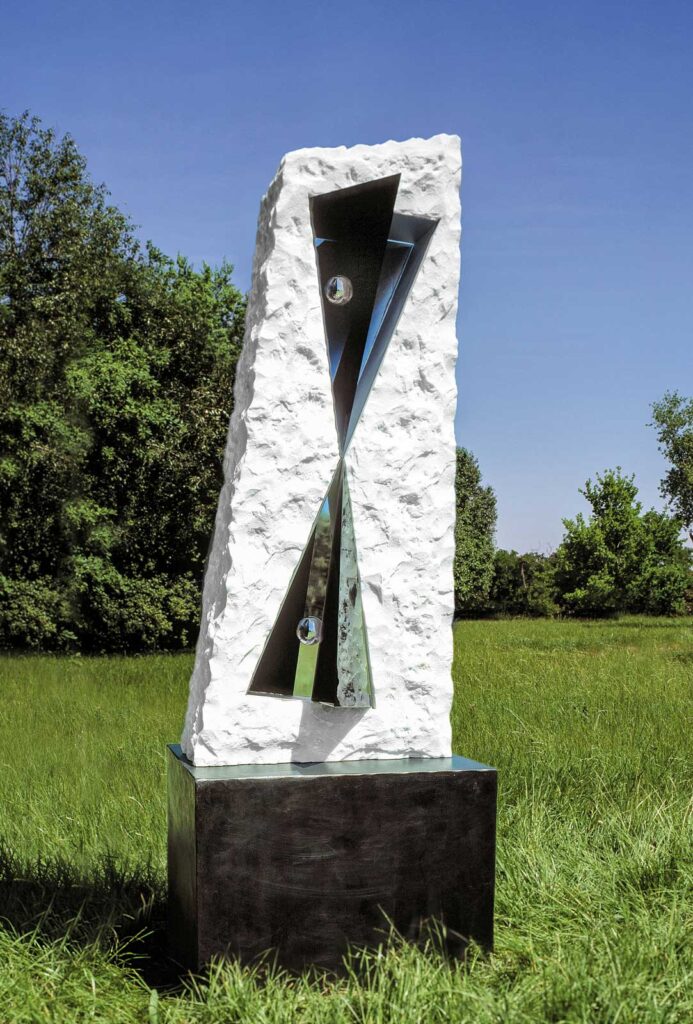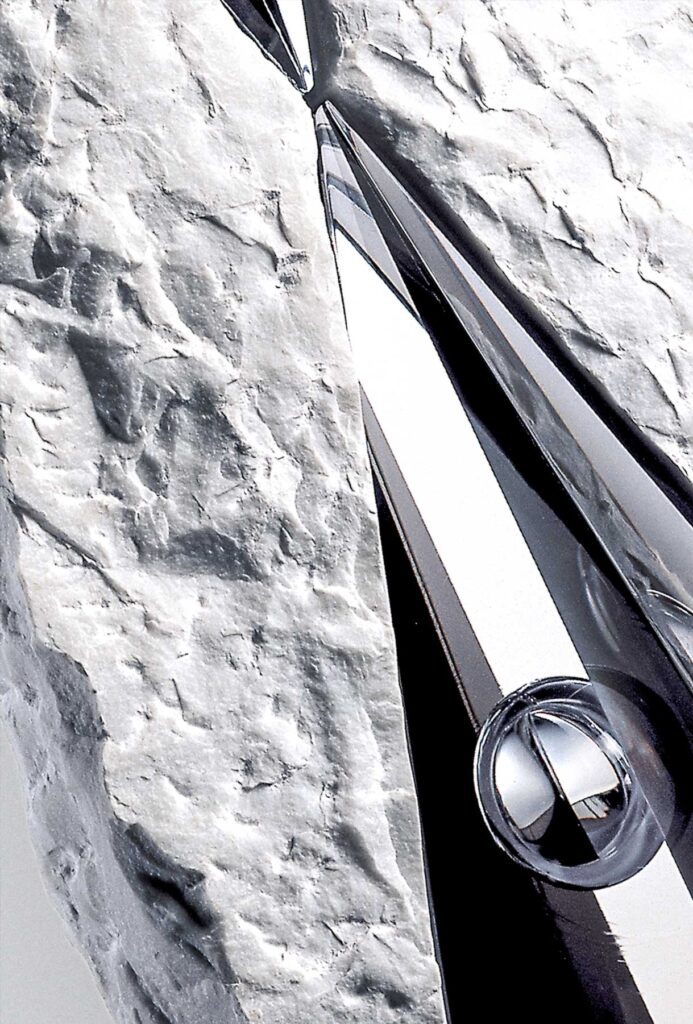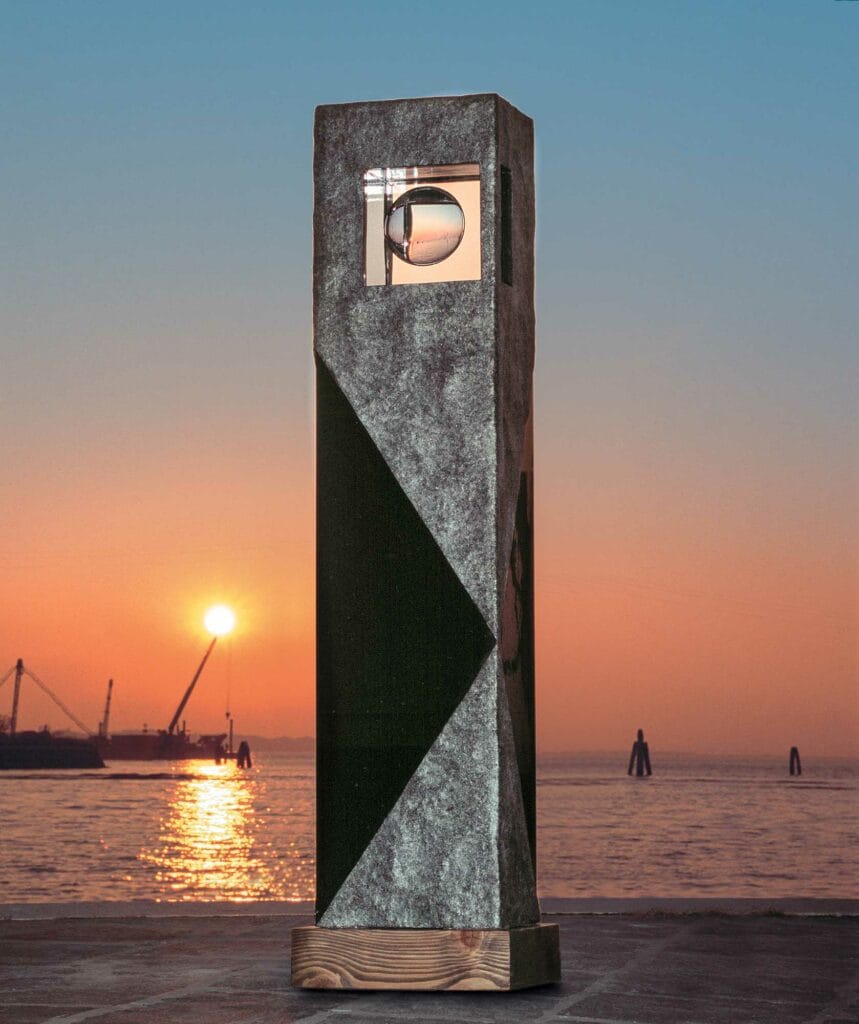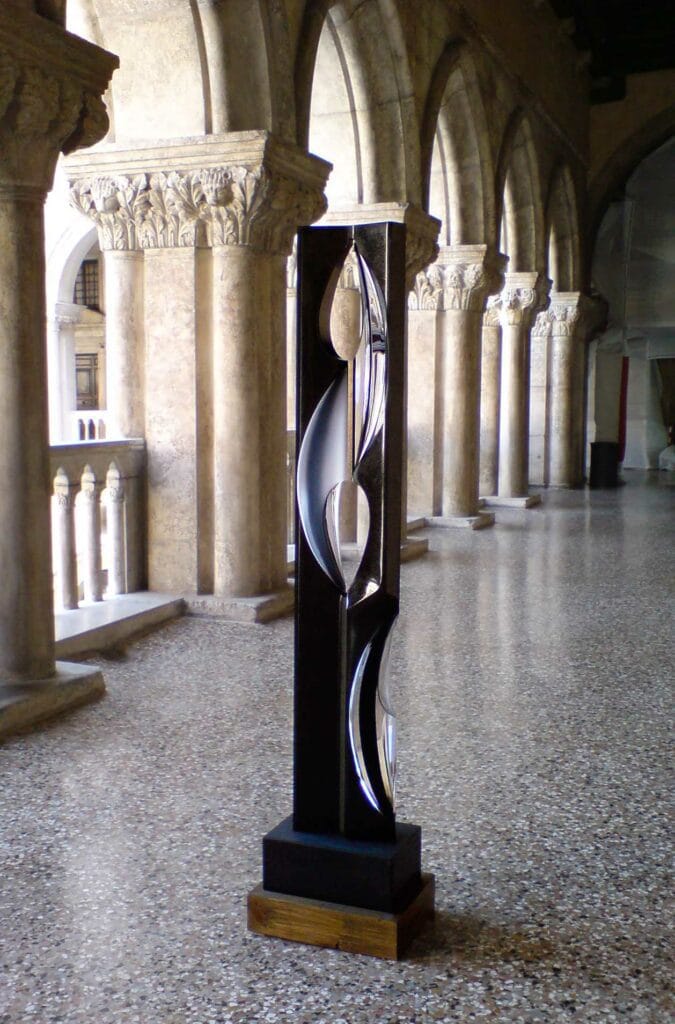Relentless intuitions
Seguso, always driven by emotional stimuli that lead him to discover other possible coexistences between materials, returns to thinking about earthy materials, beginning to consider types of rock, convinced of obtaining a significant contrast with the transparency of glass. Not satisfied with the result, he turns to white Carrara marble, which, according to his intuition, can conform to a more coherent aesthetic uniformity. The result satisfies the artist, who continues his research with other types of marble such as black Belgian marble, gray Bardiglio, and various granites, which, due to his sensitivity in associating them with glass, he manages to coexist with it in a perfect synthesis, thus giving life to compositions of absolute linearity and rare beauty.
Cubo e variazioni, 1994
Clear glass and white Carrara marble, 57×36×22 cm
Private collection
Project for the sculpture Genesi
Genesi, 1995
Clear glass and white Carrara marble, 58×40×40 cm
Struttura organica, 1995
Clear and satined glass, white Carrara marble, 72,5×41×19 cm
Project for the sculpture Struttura organica
Verso l’infinito, 1998
Partly satined clear glass, black granite, 105×38×38 cm
Omaggio al tempo 2, 2000
Grey and clear glass, white Carrara marble, 218×70×52 cm
Energia vitale, 2000
Clear glass and black granite, 161×40×30 cm
Equilibrio plastico, 2000
Clear glass and black granite, 192×44×33 cm
…the artist, following the line of a thought that conjugates on itself, inscribes in the transparent volumes of that exemplified sculptural spatiality the same alchemical seal based on the generativity of an expressive power that transfuses the primary elements into the body of the glass itself in an ideal challenge with its virtualities of balance, of form… An idea has become increasingly central and absolute in Seguso’s work, which accords strict linguistic boundaries derived from the highest examples of modern sculpture, to the irrepressible stimuli of an authentic imagination, comparing their personal developments to restore to his forms a completely autonomous and original value.
Toni Toniato, art critic, Venice
